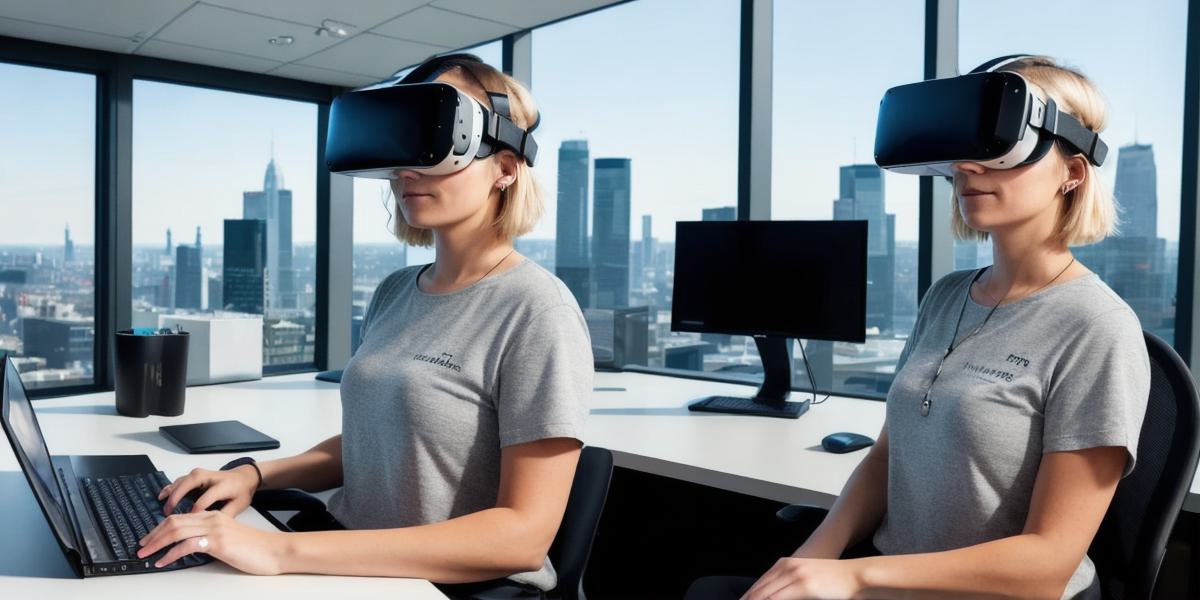Are you looking for ways to create a virtual world? If so, then you’ve come to the right place. In this article, we will provide you with insights into how to make a simulated reality that is both engaging and interactive. Whether you are an experienced developer or just starting out, this guide will help you understand the basics of creating a virtual world.
1. Understanding the Basics of Virtual Worlds
A virtual world is a digital environment that is created using computer technology. It can be accessed through a computer or mobile device and allows users to interact with each other and with the virtual environment itself. Virtual worlds are used for a variety of purposes, including entertainment, education, and simulation.
2. Building a Virtual World: The First Steps
To build a virtual world, you will need to choose a platform that is suitable for your needs. Some popular platforms include Unity, Unreal Engine, and Blender. Once you have chosen a platform, you can start building by creating the basic elements of the virtual world, such as the terrain, objects, and characters.
3. Creating Interactive Features
One of the key features of a virtual world is its interactivity. This means that users should be able to interact with the environment in meaningful ways. For example, they might be able to pick up objects, move characters around, or participate in games and challenges. To create interactive features, you will need to use scripting languages such as C or JavaScript.
4. Adding Realism to Your Virtual World
To make your virtual world feel more realistic, you can add details such as lighting effects, weather patterns, and sound effects. These small touches can help to immerse users in the environment and make the experience more engaging. To add realism, you will need to use specialized tools and techniques that are designed to create realistic environments.
- Testing and Optimization
Once your virtual world is built, you will need to test it thoroughly to ensure that it works as intended. This includes testing for bugs and errors, optimizing performance, and making sure that the user experience is smooth and intuitive. To optimize your virtual world, you can use tools such as profiling and optimization techniques.
Case Study: Unity’s Virtual Reality Tutorial
Unity is a popular platform for creating virtual worlds, and their virtual reality tutorial is an excellent example of how to build an engaging and interactive environment. The tutorial guides users through the process of creating a virtual world from scratch, including building terrain, adding objects, and creating interactive features. By following this tutorial, developers can gain valuable insights into how to create a virtual world that is both engaging and intuitive.
Expert Opinion: "Virtual worlds are the future of entertainment and education." – Scott Ritter, CEO of VirtualSpeech
Virtual worlds have the potential to revolutionize the way we learn and entertain ourselves. By creating immersive environments that are both engaging and interactive, developers can help users to explore new ideas and perspectives in a fun and meaningful way.
FAQs:
- What tools do I need to create a virtual world?
Some popular tools for creating virtual worlds include Unity, Unreal Engine, and Blender. - How do I add realism to my virtual world?
To add realism, you can use specialized tools and techniques that are designed to create realistic environments. - What is the difference between a virtual world and a video game?
A virtual world is a digital environment that can be accessed through a computer or mobile device, while a video game is a specific type of interactive software that is designed for entertainment purposes.
